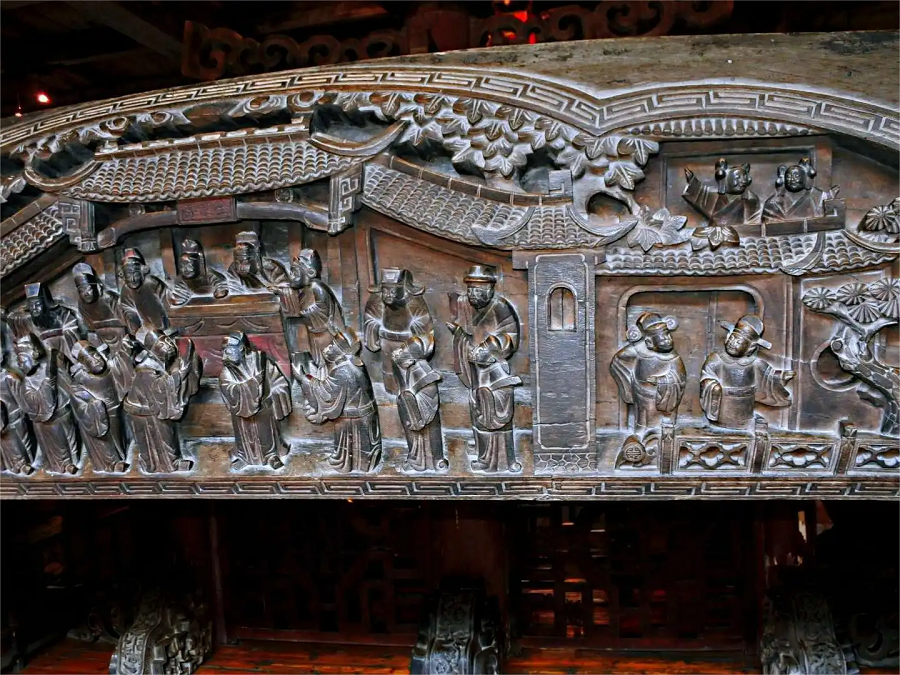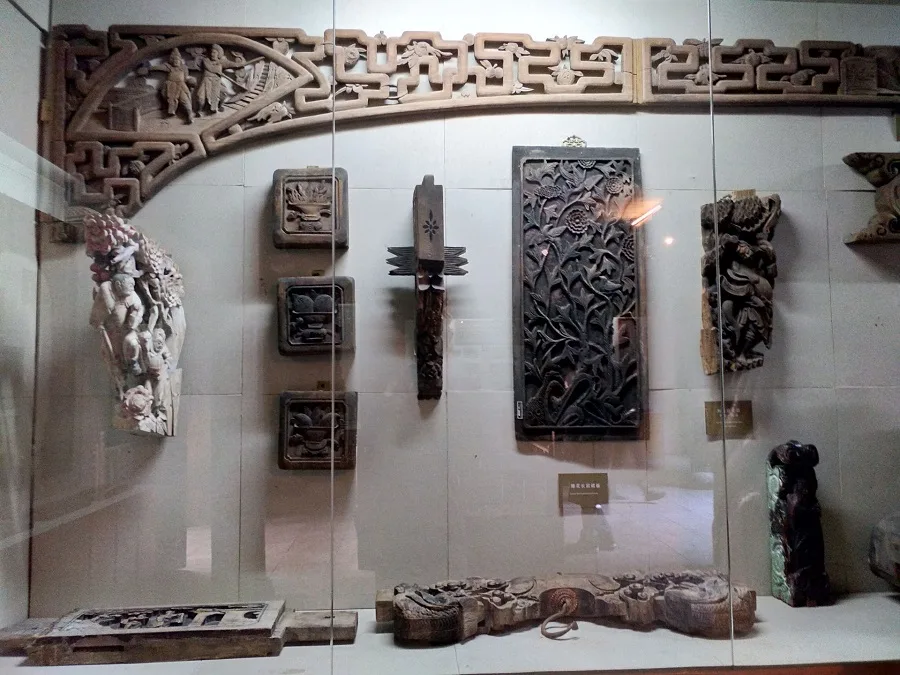Musée de la sculpture sur bois de Jiangnan, Wuzhen - Billets, heures d'ouverture, emplacement et points forts


The Jiangnan Wood Carving Museum (江南木雕陈列馆) is nestled in the eastern section of Wuzhen, Zhejiang Province, China, within the former residence of a prominent figure named Xu Ai, originally from Shaoxing, Shangyu. Xu Ai made his fortune through wine-making and later diversified into hotel management, rice trading, and flour milling. With his wealth, he constructed a lavish mansion consisting of four courtyards, which became known as the “Xu Family Hall” among locals. However, what truly distinguishes this mansion is its exquisite wood carvings, adorning almost every wooden component of the building. Particularly noteworthy are the intricately carved beams, pillars, and windows, earning it the nickname “Baihua Hall” or “Hall of a Hundred Flowers.”
Table des matières
Informations de base
| Durée estimée de la visite | 1 heure |
| Prix du billet | Included in the ticket for the east part of Wuzhen Water Town |
| Heures d'ouverture | 7.00 - 18.00 |
| Numéro de téléphone | 0086-0573-88731088 |
Localisation et transport
The Jiangnan Wood Carving Museum is located at 420 East Street, Old Street, East Zone of Wuzhen, Tongxiang City, Zhejiang Province, China. To get there, you can take bus Huzhou 145, Suzhou 7213, Tongxiang K337, Tongxinag K338, Tongxiang K340, Tongxiang K350, or Tongxiang K353, get off at Xinhua Road Intersection Stop (新华路口站), and walk about 350 meters to the north.
Highlights of Jiangnan Wood Carving Museum
Dragon and Phoenix Pillars

Upon entering the stone-paved gate of the Xu Family Hall, visitors are greeted by a set of intricately carved screens and an introduction to the Jiangnan Wood Carving Museum. Behind them stand a pair of tulipwood columns, each approximately 2 meters tall, featuring exquisitely carved dragons and phoenixes. These lifelike carvings, depicting dragons soaring and phoenixes dancing (often reserved for imperial palaces), are meticulously crafted and exceptionally rare in Jiangnan folk architecture, making them highly prized decorative pieces and collectibles.
Family Portrait of Guo Ziyi

Moving into the second section of the Xu Family Hall, visitors step into the main exhibition hall of the wood carving museum. Here, they are welcomed by a large camphor wood beam measuring approximately 4 meters in length, 50 centimeters in width, and weighing over 300 kilograms. The front face of the beam depicts a “family portrait” of Guo Ziyi celebrating his birthday, with Guo Ziyi’s seven sons and eight sons-in-law arranged around him, facing the two elderly figures in the center. Each character is meticulously carved with different expressions and postures, vividly capturing the essence of the scene. Notably, the architectural design of this triple-room exhibition hall itself serves as a showcase of carving art. The beams atop the four large pillars are adorned with delicate, hollowed-out flower baskets, featuring plum blossoms, orchids, peonies, and chrysanthemums.
Numerous Decorative Elemenets

Surrounding the exhibition hall are various floor-to-ceiling windows and decorative elements, featuring a plethora of designs depicting historical figures, traditional opera stories, flora and fauna, and landscapes. These include scenes such as “Eight Immortals Crossing the Sea,” “The Legend of Yue Fei,” “Squirrel Eating Grapes,” “Plum, Orchid, Bamboo, and Chrysanthemum,” “Harmony of the Two Immortals,” “Fortune and Longevity,” “Fishing, Woodcutting, Farming, and Studying,” and “The Romance of the Western Chamber,” among others. With hundreds of woodcarving masterpieces on display, most of which are architectural decorations, the museum showcases an impressive array of craftsmanship and artistic ingenuity.
Attractions de Jiaxing, Musées du Zhejiang